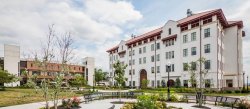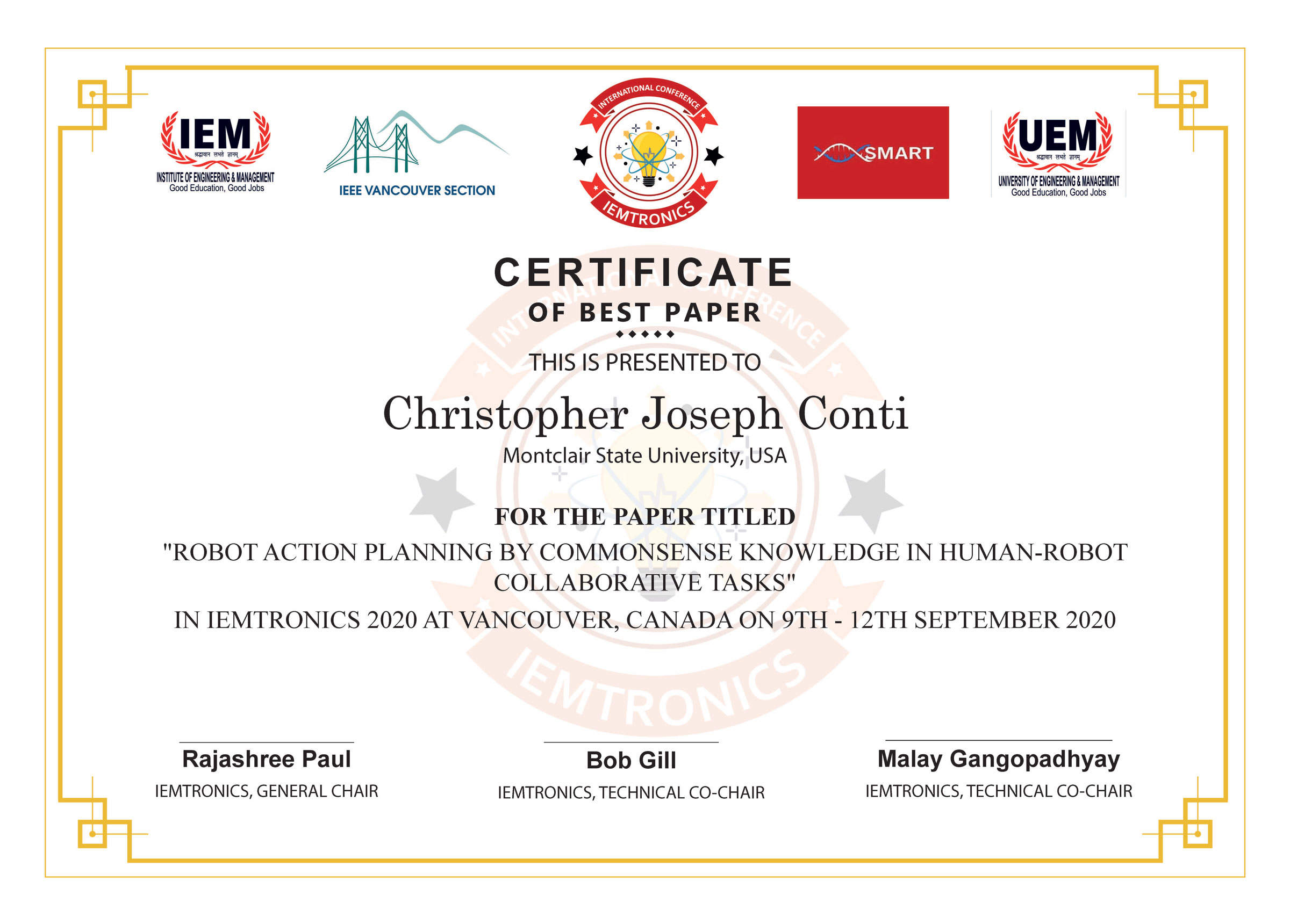Computer Science Student and Faculty Receive Best Paper Award at IEEE IEMTRONICS 2020
The paper, Robot Action Planning by Commonsense Knowledge in Human-Robot Collaborative Tasks, was awarded in the Robotics Track of the conference
Posted in: Awards & Recognition, CSAM Research, CSAM Students, School of Computing

The team consisted of Christopher Joseph Conti, a student in the Master’s portion of his combined BS/MS in computer science, and Drs. Aparna Varde and Weitian Wang. IEEE IEMTRONICS is the International IoT, Electronics and Mechatronics Conference, a multi-disciplinary venue. The paper will be published in full in the IEEE proceedings indexed on Xplore, DBLP and other sites.
View the certificates awarded to each author below:
Click on an image below to enlarge photo.
Abstract
Robotics and artificial intelligence (AI) span the broad realm of mechatronics in general. Humans and robots can collaborate with each other to enhance various tasks, e.g. in the vehicle industry. Facets of AI such as commonsense knowledge can play a significant role here. In this paper, we propose an approach for human-robot collaboration such that it leverages commonsense knowledge to develop models for the simulation of assembly tasks in real-world applications. We consider modeling based on relevant attributes, e.g. weight and stability of parts. The proposed approach thereby entails human-robot interaction, mathematical modeling, both semantics and pragmatics in commonsense knowledge, as well as challenges specific to the application domain. We describe our approach, focusing on the mathematical modeling, and conduct our experimental evaluation using simulation tasks. Experimental results indicate that the proposed approach yields better outcomes than humans or robots working alone, which is in line with other such claims in the field of human-robot collaboration. This work sets the stage for real robot applications based on the results of our simulation tasks.



